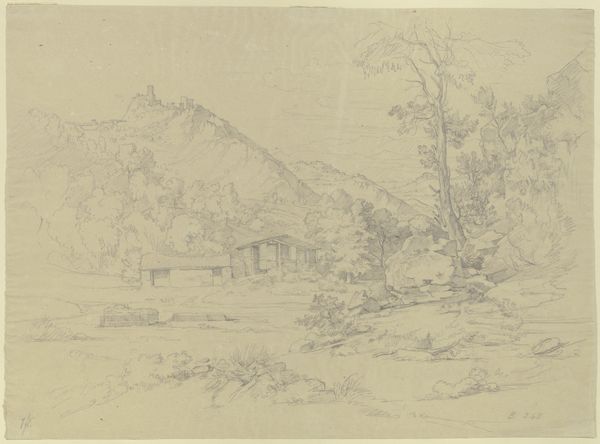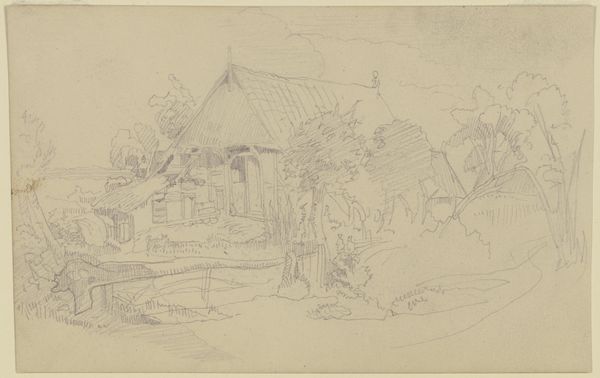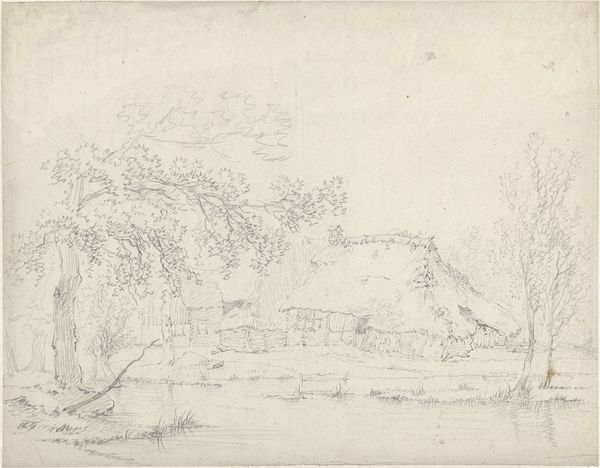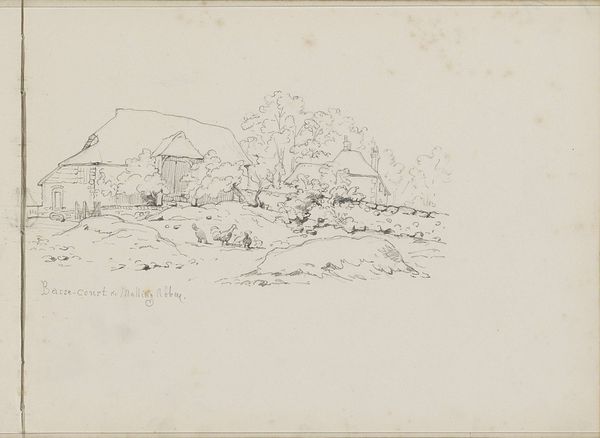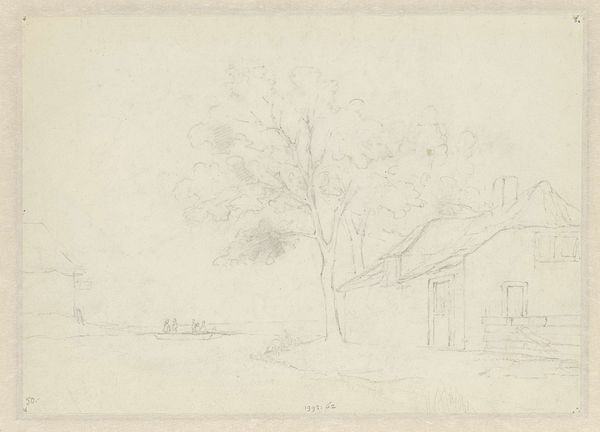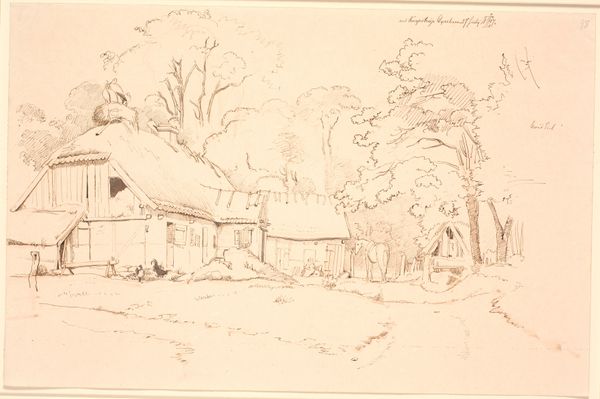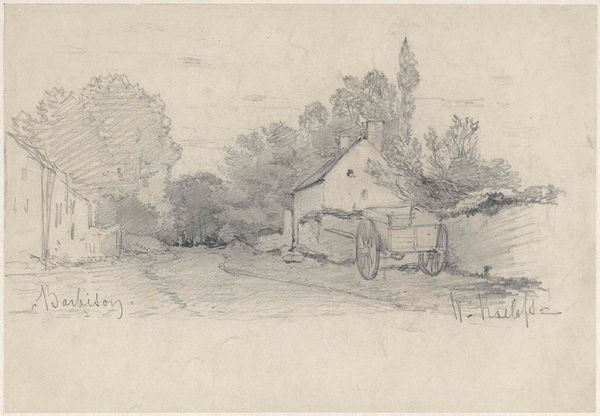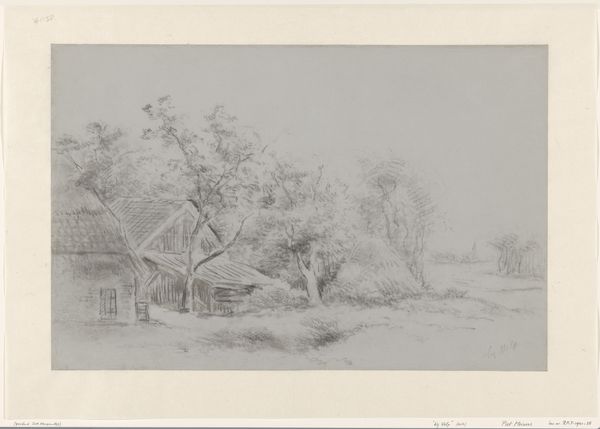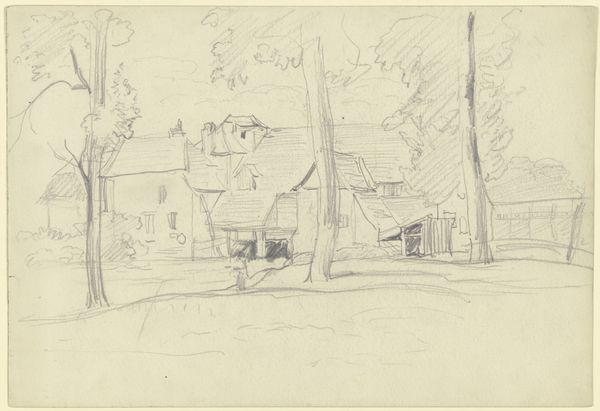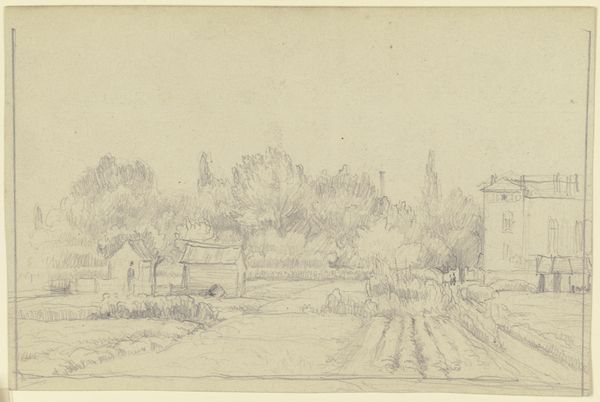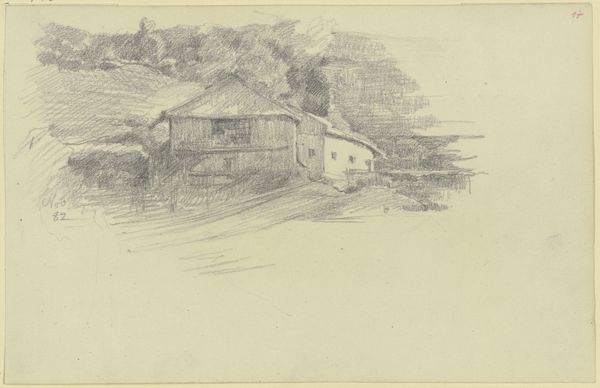
Copyright: Public Domain
Editor: Here we have Fritz Bamberger's "Farmstead in Partenkirchen," a pencil drawing dating from 1854. There's something incredibly serene about its delicate lines. It’s like a captured moment of quiet rural life. How do you interpret this work? Curator: That serenity is partly strategic. In the mid-19th century, landscapes like this were more than just pretty pictures. They played a key role in constructing ideas about national identity, especially in places like Germany which were in the process of unification. Do you see how the humble farmstead is rendered with such care? Editor: Yes, there’s almost a romantic idealization in the way it's depicted, despite its simplicity. It’s not grandiose, but intimate. Curator: Exactly. This romanticism taps into a cultural yearning for an authentic, rooted existence, an idea that’s subtly contrasted against the backdrop of industrial and political upheaval at the time. Bamberger is presenting an image of Germany, of *Heimat*, connected to its land and traditions. How might such depictions influence public perception of the rural landscape? Editor: It makes it seem almost timeless, untouched by the rapid changes happening elsewhere. It also promotes a particular vision, perhaps overlooking the hardships of rural life. Curator: Precisely. The politics of imagery often involves what is *not* shown. Artists like Bamberger were influential figures shaping a visual narrative and a sense of cultural unity. The popularity of landscapes reinforced shared values and promoted the idea of a collective heritage. Editor: That's fascinating! I had not considered that a seemingly simple drawing could carry so much cultural and political weight. Thanks for helping me unpack that. Curator: It’s in these everyday scenes that some of the most profound cultural narratives are embedded. It certainly provides much to reflect upon, from visual language to hidden ideologies.
Comments
No comments
Be the first to comment and join the conversation on the ultimate creative platform.
